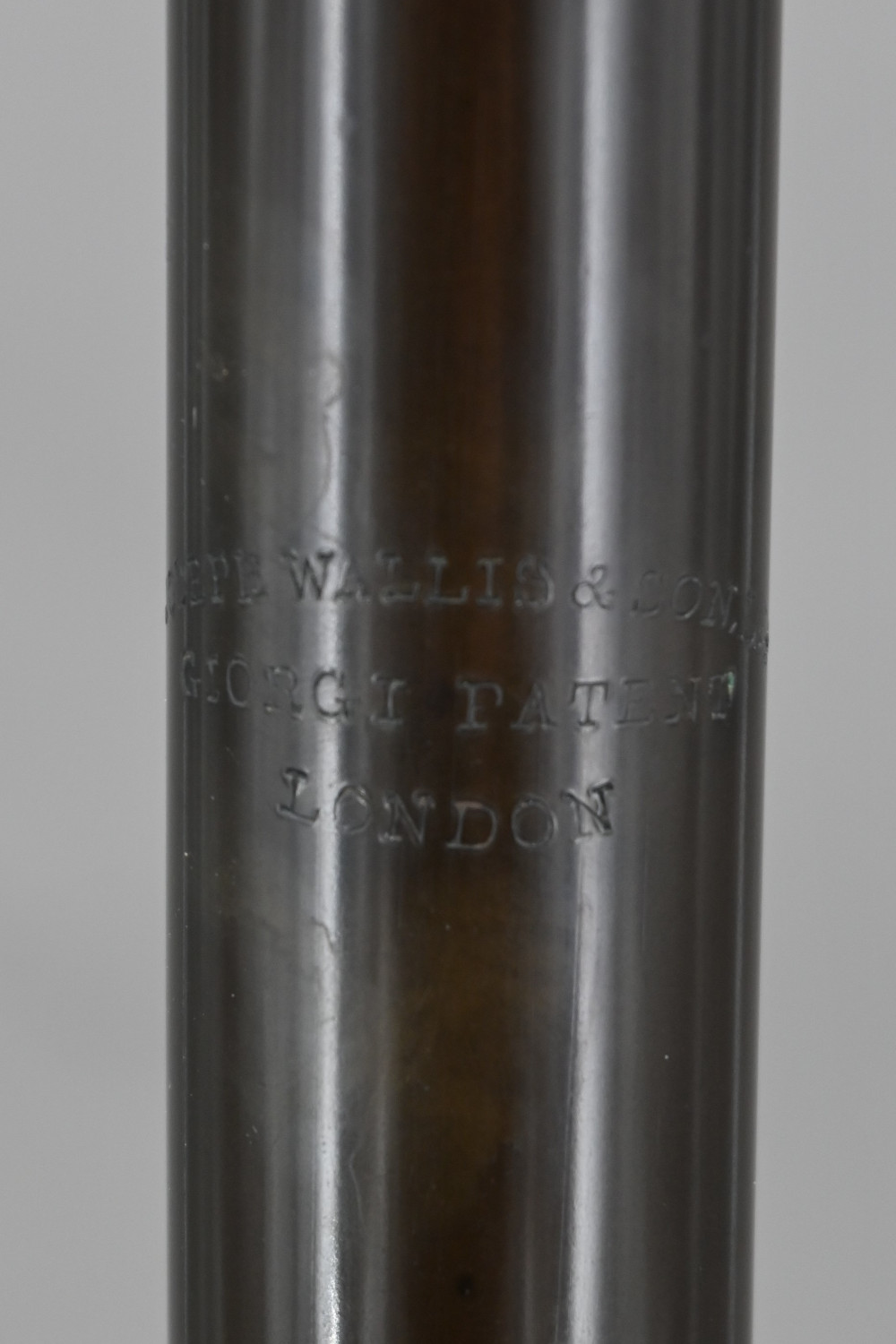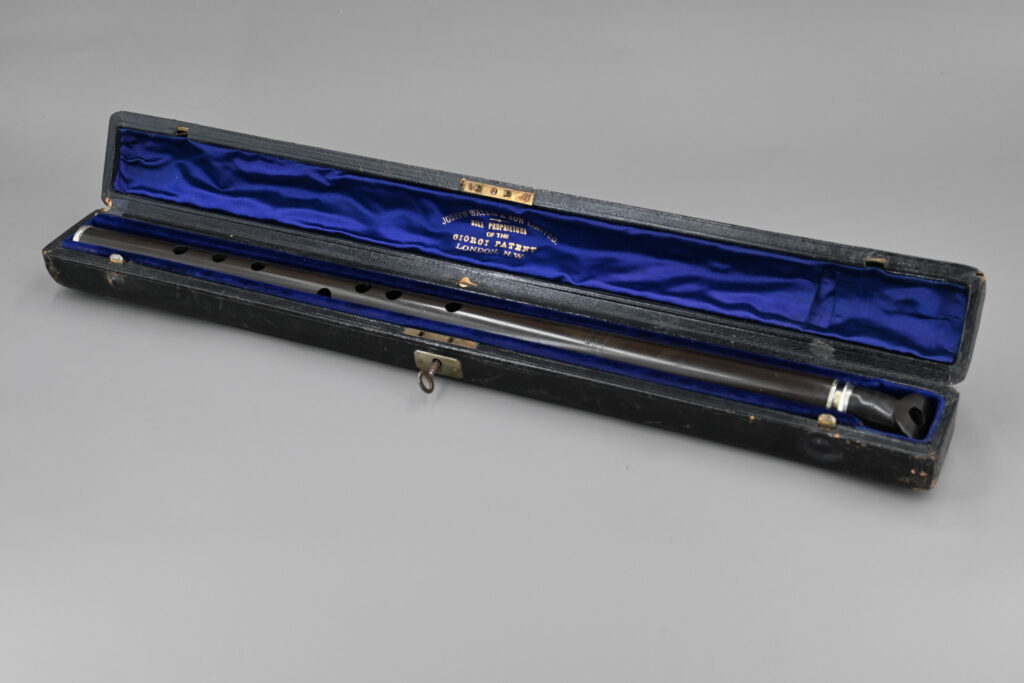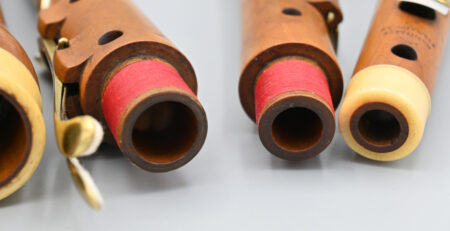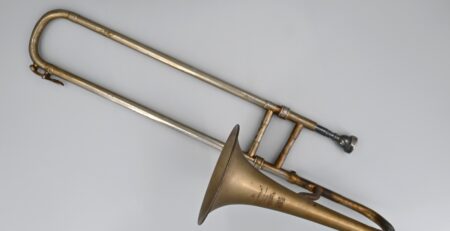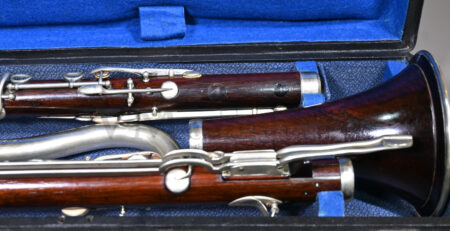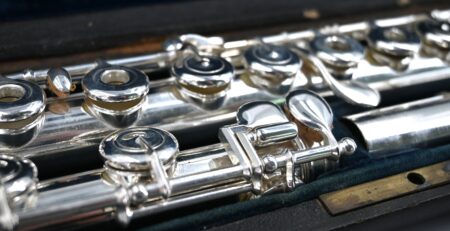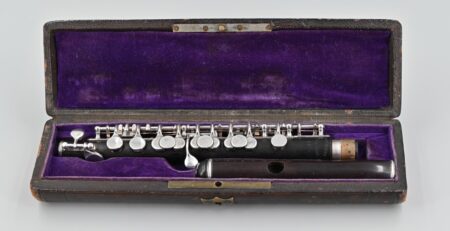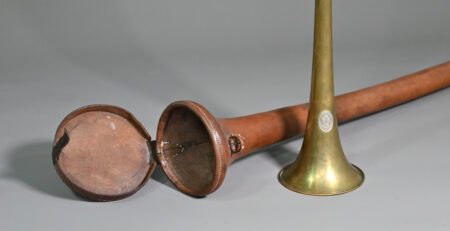GIORGI Flute
In the 19th century, several inventors patented ideas to enable the flute to be played vertically. This meant that the flute is held vertically, but blown transversely. Enter the fascinating ‘Giorgi’ flute! The Giorgi flute was an 11-hole keyless flute to which keys could be furnished if required. The instrument had a cylindrical bore, with a flute-type embouchure on a mouthpiece which featured a tuning slide. The flute was made of Ebonite . It had eleven holes. Keys were often added to act as extensions of the fingers for those with problems with the stretch. The flute did not have a cork and the chin rested on the mouthpiece while played.
This flute construction was patented by Carlo Tommaso GIORGI. It was manufactured in Italy by Maino & Orsi in Milan and in 1896, the company Joseph Wallis & Son Ltd. purchased the right to make the Giorgi patent flute and also the Giorgi piccolo in England. Giorgi wanted to create a flute that could play all chromatic notes without the need for keys or cross-fingerings. His system involves using the fingers and thumbs of both hands as well as the side of the first finger of the left hand to cover the eleven holes.
